-
 © Tony Baker/Classic & Sports Car
© Tony Baker/Classic & Sports Car -
 © TVR Car Club
© TVR Car Club -
 © Jomar Cars
© Jomar Cars -
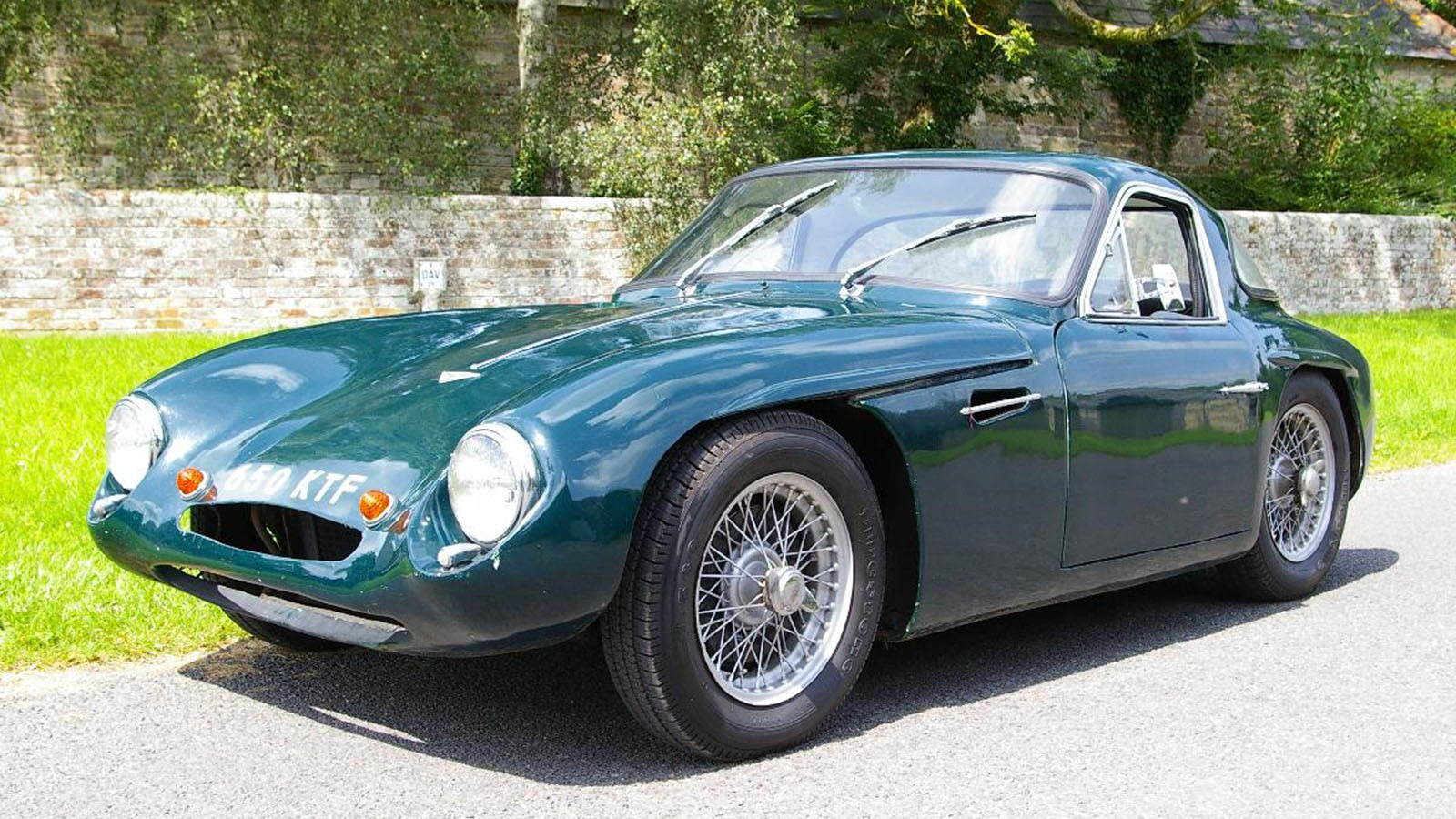 © Historics Auctions
© Historics Auctions -
 © Classic & Sports Car
© Classic & Sports Car -
 © Vauxford/Creative Commons licence: https://creativecommons.org/licenses/by-sa/4.0/deed.en
© Vauxford/Creative Commons licence: https://creativecommons.org/licenses/by-sa/4.0/deed.en -
 © Silverstone Auctions/Iconic Auctioneers
© Silverstone Auctions/Iconic Auctioneers -
 © Bonhams|Cars
© Bonhams|Cars -
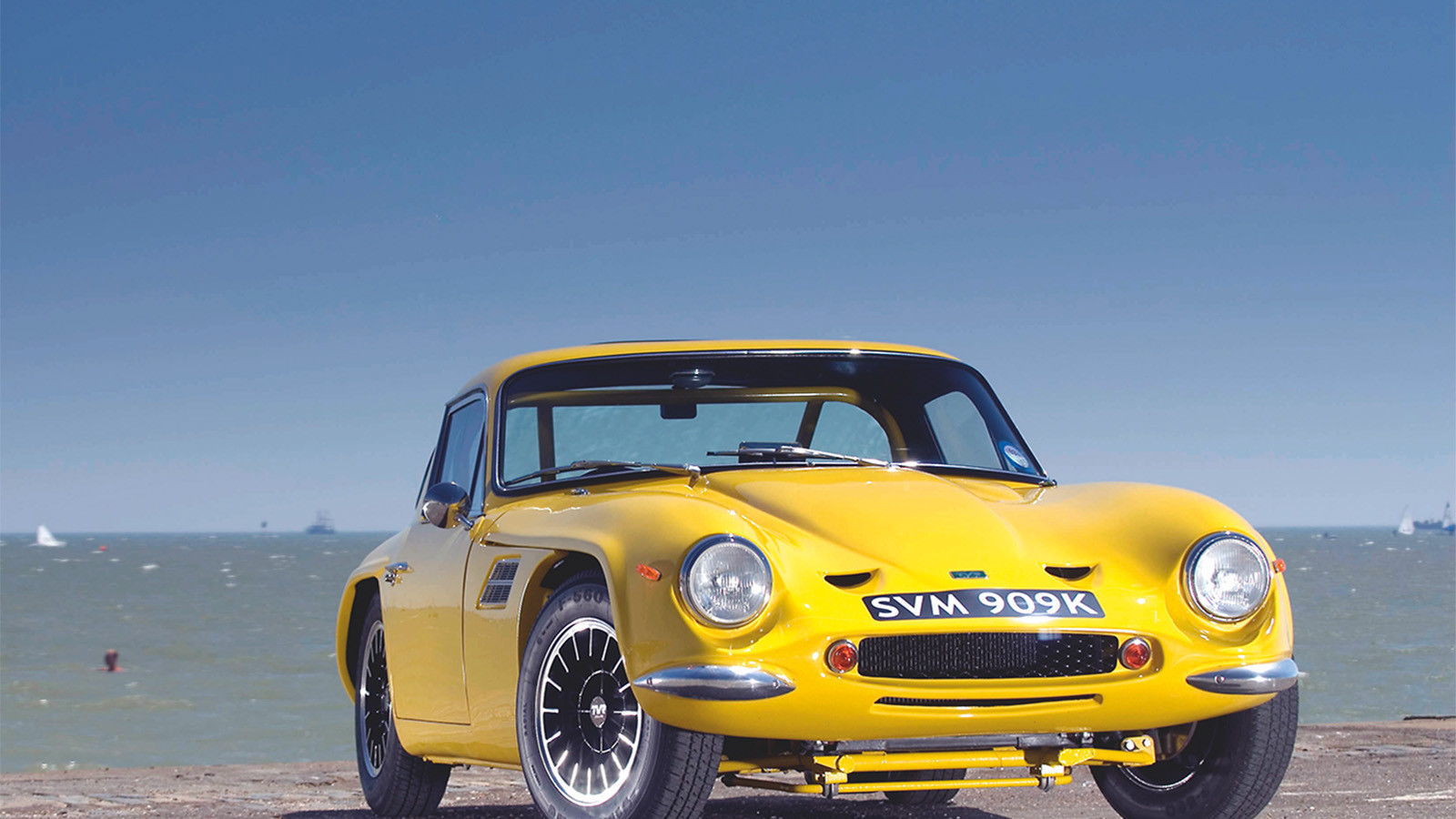 © Classic & Sports Car
© Classic & Sports Car -
 © Tony Baker/Classic & Sports Car
© Tony Baker/Classic & Sports Car -
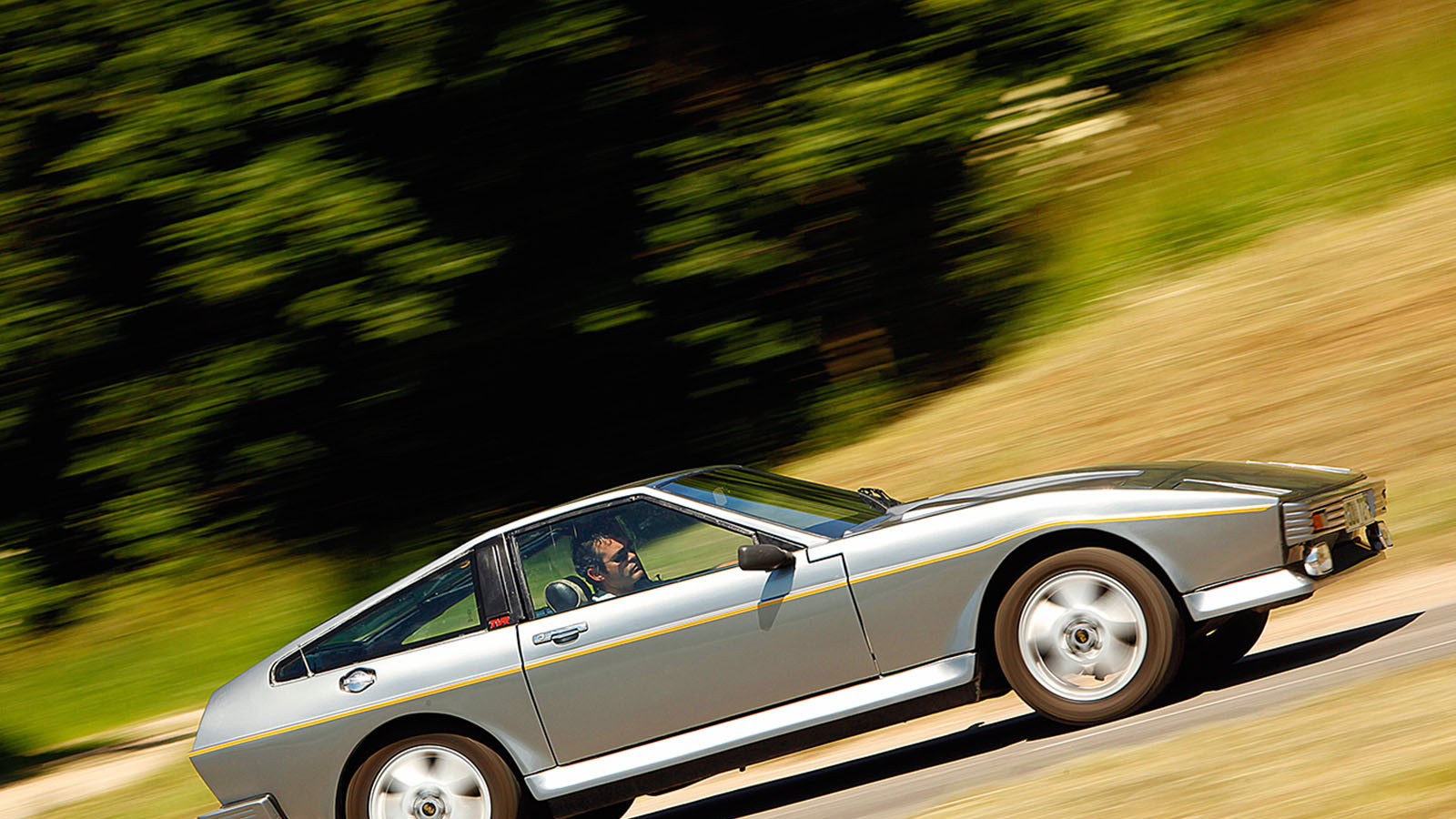 © Classic & Sports Car
© Classic & Sports Car -
 © Will Williams/Classic & Sports Car
© Will Williams/Classic & Sports Car -
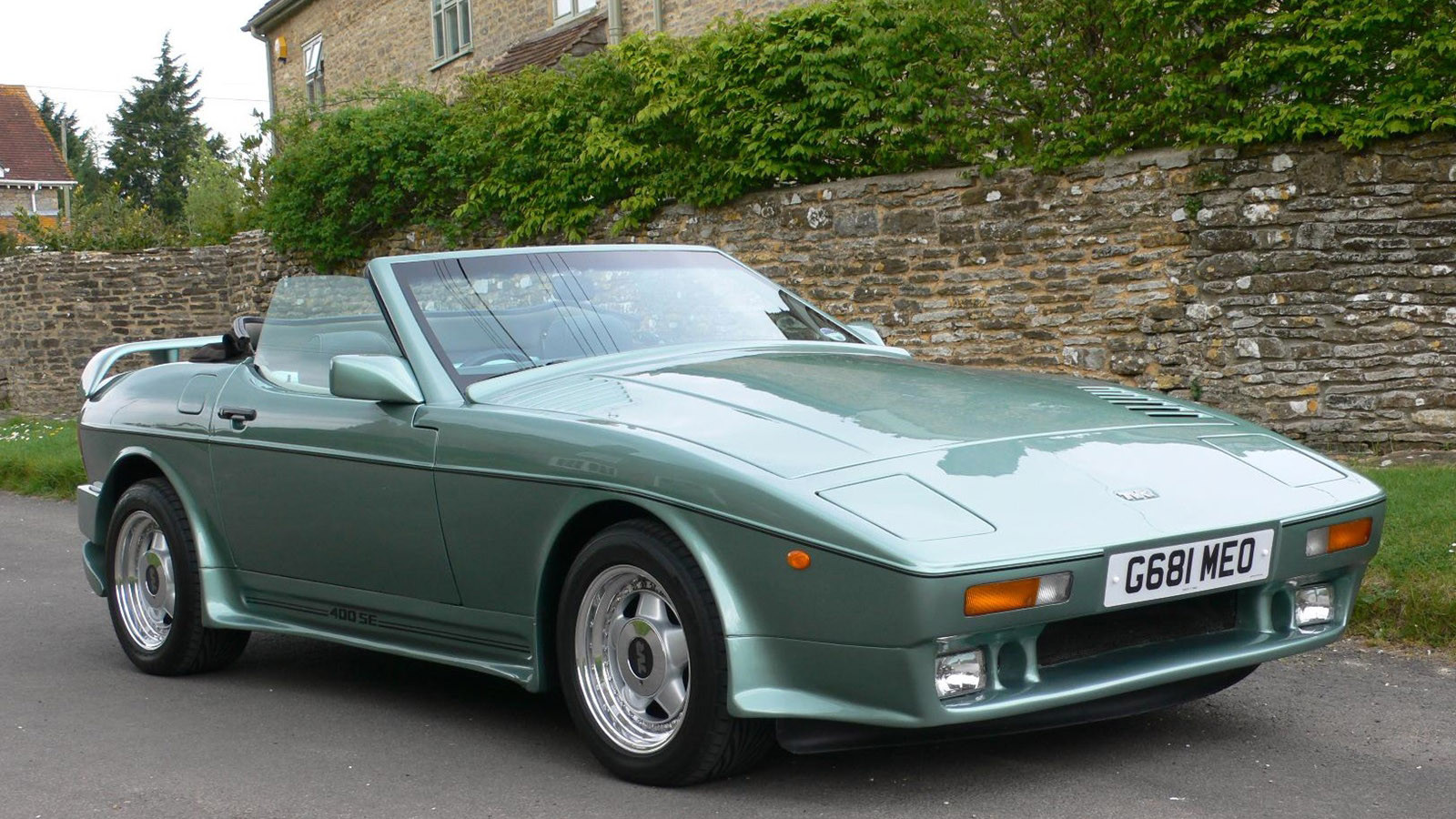 © Dorset Vintage & Classic Auctions
© Dorset Vintage & Classic Auctions -
 © Haymarket Automotive
© Haymarket Automotive -
 © TVR
© TVR -
 © Bonhams|Cars
© Bonhams|Cars -
 © Thomas Pics
© Thomas Pics -
 © TVR
© TVR -
 © Haymarket Automotive
© Haymarket Automotive -
 © Max Edleston/Classic & Sports Car
© Max Edleston/Classic & Sports Car -
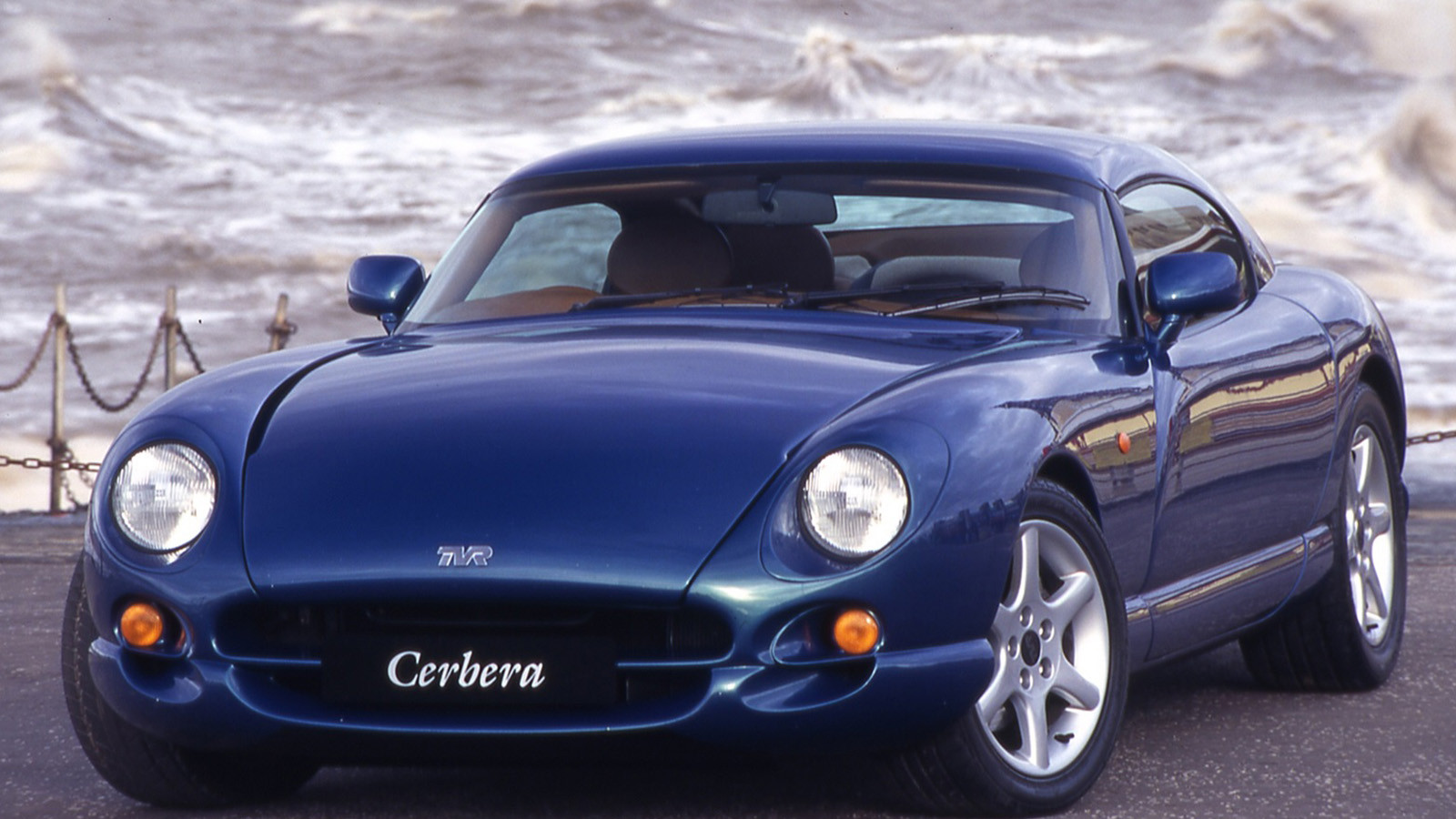 © TVR
© TVR -
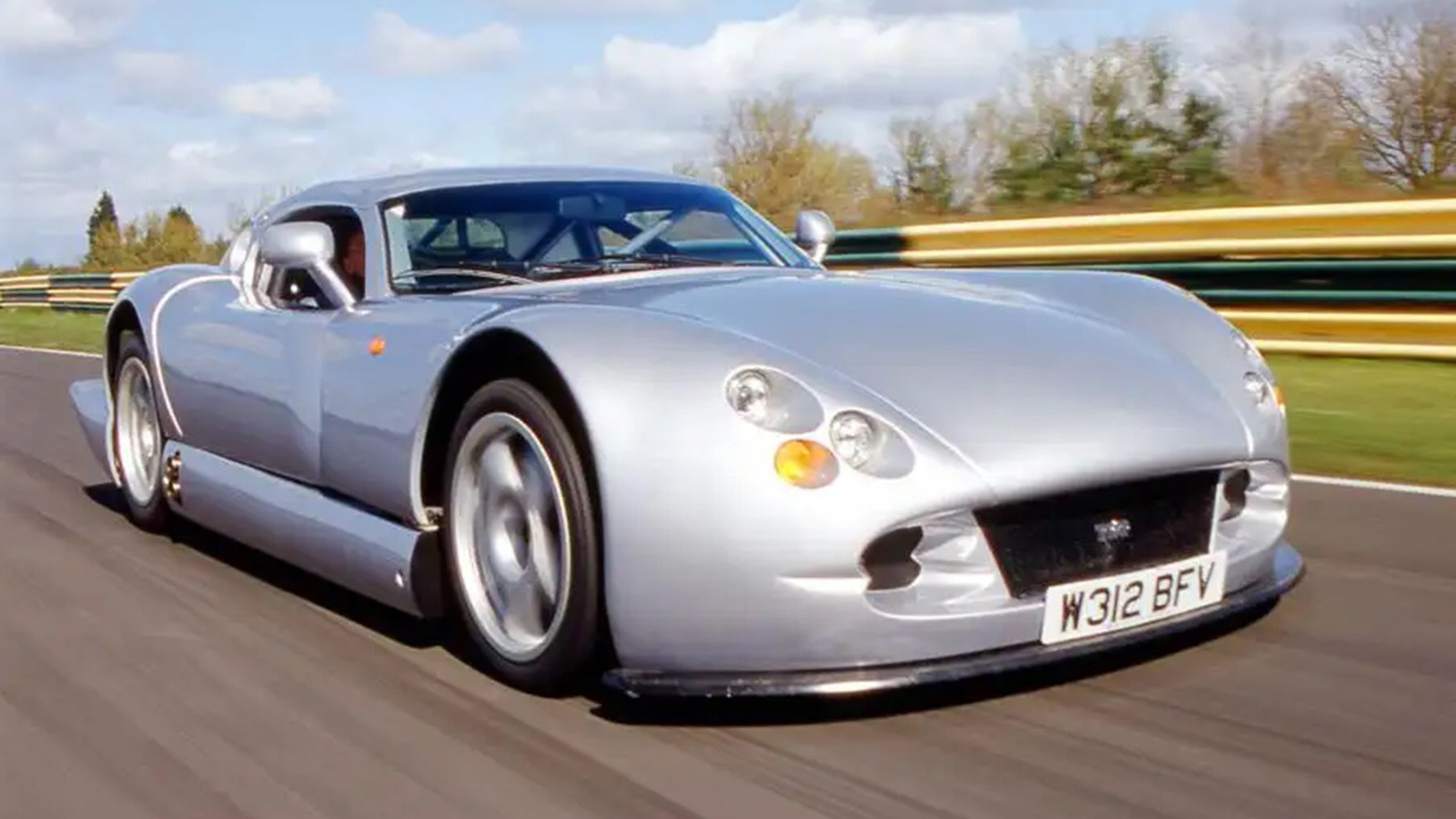 © Haymarket Automotive
© Haymarket Automotive -
 © TVR
© TVR -
 © John Bradshaw/Classic & Sports Car
© John Bradshaw/Classic & Sports Car -
 © TVR
© TVR -
 © TVR
© TVR -
 © Haymarket Automotive
© Haymarket Automotive -
 © TVR
© TVR
-
TVR hits 75
TVR built its first car 75 years ago and it’s been responsible for some of the most enticing and outlandish cars since.
Despite various financial hardships, TVR always managed to come up with the performance goods thanks to canny engineering and powerful engines, usually bought in from suppliers.
The cars were also very good value, exciting to drive and stood out from the crowd, which gave them a special appeal.
Here are TVR’s models, presented in chronological order.
-
1949 No 1
The very first car to bear the TVR badge was fittingly called No 1.
Like many specials of the era, it used a mix of Morris 8 suspension and brakes with the engine from a Ford 100E.
The key difference between Trevor Wilkinson’s first car and many rivals was he built his own multi-tube chassis to give the car a much lower stance and better rigidity than a repurposed Morris, Ford or Austin Seven frame could provide.
That very first TVR was damaged in a crash and recycled to become TVR No 3, but the second TVR made called No 2 still exists.
It already incorporated improvements such as a larger radiator to give it better performance alongside a 90HP engine and independent front suspension. It was used on the road and to compete in 1172 Formula races.
-
1955 Jomar
The Jomar Gran Turismo Coupe came about through a deal between Trevor Wilkinson and US-based garage proprietor Ray Saidel.
Spotting the potential of the TVR for racing in the US, Saidel struck a deal with the British firm to sell cars under his Jomar company name.
The relationship started strongly and Jomars performed well in sports-car races.
Saidel went on to suggest a number of improvements to TVR, which were incorporated and also led to the Gran Turismo Coupe model that was clearly related to the Grantura.
However, Saidel parted ways with TVR when they disagreed over how many cars the US company would sell.
The name Jomar came from first letters of Saidel’s children, who were Joanna and Marc. In total, 24 Jomars were made, including two chassis that predated the TVR deal.
-
1958 Grantura
The Grantura proved to be a very successful model for TVR, regardless of the business ups and downs going on in the background.
A total of 796 Granturas were made of all types, which spanned models sold with Ford, BMC and Coventry-Climax engines, plus the later 1800 B-series motor from the MGB.
The Grantura MkIV was a slightly more refined car than its predecessors, thanks to better build quality and a reshaped rear end that did away with the fins of the earlier cars.
The 1800S version came with a bigger fuel tank for longer-range driving.
-
1963 Griffith
This is the car that founded TVR’s reputation for building sports cars that just packed a bit more punch than their similarly priced rivals.
Cramming the V8 from a US car under the hood of a European sports model was not a new idea, but TVR importer Jack Griffith still deserved credit for managing to fit Ford V8s into such a compact coupe.
The result was sensational performance and top speeds of up to 155mph and 0-60mph in less than 6 secs if you went for the full-house, 4.7-liter motor.
Most Tuscans headed to the US and were fearsome competition cars.
Altogether, TVR made 310 Griffiths in both 200 and 400 forms, and only 20 were sold new in the UK with right-hand drive.
-
1965 Trident
The TVR Trident was a show car that came very close to production with the Blackpool firm, before ending up being made by an independent company run by TVR dealer Bill Last.
Designed by Trevor Fiore for the 1965 Geneva motor show, the Trident was a sharply styled coupe with power from a 4.7-liter Ford V8.
It was claimed it had a top speed of 134mph, but plans to make more floundered because of cash-flow problems.
Only four TVR Tridents were made, three coupes and one convertible, while Bill Last’s company went on to make around 225 of his version based on the Austin-Healey 3000 chassis.
-
1966 Tina
Recognizing that a more affordable model would make sound financial sense, TVR explored the idea with the Tina.
It was shown for the first time at the 1966 Turin show with bodywork styled by Trevor Fiore, who had also been responsible for the Trident.
The Tina used Hillman Imp components, including the rear-mounted aluminum engine, in a steel body placed over the Imp’s floorpan.
This was for a 2+2 open-top model, and there was also a coupe version made for the London motor show.
Despite a lot of interest from potential buyers, TVR didn’t have the money or capacity to put the Tina into production and the project was scrapped.
-
1967 Tuscan
By the time the Tuscan arrived on the scene in 1967, TVR had been out of the US market for a couple of years and wanted back in. This was the model to do just that and was, in essence, a revived Griffith.
Not long after the model was launched, TVR extended the wheelbase by 4.5in (114mm) in 1968 along with a 4in (100mm) wider body to give more stability at high speed.
Power still came from Ford V8s in 4.7- and 5-liter sizes, which made the Tuscan a genuine 155mph car, but that wasn’t enough to convince many US customers to part with their cash.
A V6 version of the Tuscan was added in 1969 with the 3-liter V6 engine from the Ford Capri to give a 120mph top speed.
TVR shifted 101 of this version, while the V8s notched up a total of 73 sales.
-
1967 Vixen
The Vixen was TVR’s banker model, bringing in much-needed business where its more powerful cars were built in penny numbers.
Most of the Vixen’s mechanical components were lifted from the Ford Cortina GT, though some very early examples came with the engine from an MGB.
The 1.6-liter Ford unit provided c88HP and up to 94HP with a Capri-spec motor, and the engine was helped by the Vixen’s light weight to give good performance of up to 112mph flat out and 0-60mph in 10.5 secs.
TVR upgraded the Vixen to S2 trim in 1968 with a longer wheelbase, while the S3 introduced the Capri engine and alloy wheels.
S4 versions used the same chassis as the M-Series cars.
In 1971, TVR also sold the Vixen with the 1.3-liter engine from the Triumph Spitfire, but it was a slow seller and a mere 15 were built.
-
1971 M-Series
The M-Series cars were a coming of age for TVR, offering a more refined driving experience along with better build quality and some very rapid versions.
This series started with the launch of the Triumph-powered 2500M in 1971, quickly followed by the 1600M as a Vixen replacement in 1972.
However, the big-selling M-Series car was the 3000M that also arrived in 1972. With sturdy Ford V6 power, this coupe could top 120mph and delivered 0-60mph in 7.5 secs.
There was also a convertible version called the 3000S in 1978, that sold 258 on top of the coupe’s 654 sales.
Most desirable of all the M-Series cars is the 3000M Turbo that had 232HP courtesy of a Broadspeed-boosted 3-liter V6.
It could hit 140mph and dispatched 0-60mph in 5.8 secs, if you could live with the 19mpg gas mileage.
TVR also made a Taimar Turbo, which used the hatchback body with opening tailgate of the normally aspirated Taimar, and 13 3000S Turbo convertibles.
-
1980 Tasmin
It was all change for the new decade as the Tasmin ushered in wedge styling to TVR for the 1980s. The design was by Oliver Winterbottom and made its debut with the Tasmin coupe.
A 2+2 coupe and open-top two-seater expanded the range in 1981, and all started out with the 2.8-liter Ford V6 motor from the Capri.
The same year, TVR also brought in a modern-day Vixen with the Tasmin 200 that used a 2-liter Ford Pinto engine. Unsurprisingly, it found few takers and only 61 of both coupe and convertible were sold.
The big-selling Tasmin-based model was the 280i, that racked up a decent 862 sales.
-
1983 350i
Clearly derived from the TVR Tasmin, the 350i dropped that name and introduced the Rover V8 motor to the line-up.
It ushered in a golden period for the company and cemented its image as a maker of raw, fast, loud sports cars under the stewardship of Peter Wheeler.
A handful of 350i coupes were made, with six of these notional four-seaters sold. However, the two-seat roadster was what buyers wanted and TVR was happy to give it to them to the tune of 897 sales.
The standard-tune Rover V8 gave 193HP and most came with the five-speed manual gearbox shared with the Rover Vitesse. However, a three-speed automatic transmission was an option.
TVR dealer David Haughin also offered his SX350 supercharged conversion for the 350i and sold 11 of them.
-
1984 390 SE
It was inevitable that TVR would offer a larger version of the V8 engine, and the 390 SE was developed with a motor by racing driver and builder Andy Rouse.
With the V8 bored out to 3905cc, it was claimed to make 279HP for the 390 SE. To cope with the power, TVR now fitted a Torsen limited-slip differential and also added cooling ducts for the brakes.
This was essential for a car that could cover 0-60mph in 5.7 secs and hit 143mph.
A year after its launch, the 390 SE also received a more rounded body shape ahead of a bigger restyle in 1987 for this range of cars.
TVR also sold a 400 SE with the engine stretched to 4 liters.
-
1986 420
Yet another step up the ladder in engine size and performance for TVR’s now convertible-only line-up of sports cars.
The base 420 SE was a rare machine, not helped by all the attention focusing on the impressive 420SEAC.
The SEAC’s name came from the SE tag plus AC that stood for ‘Aramide Composite’. This spoke of the carbonfiber and Kevlar materials used for the car’s bodywork, so that it tipped the scales at 1130KG (2491LB).
That weight combined with 305HP from the 4.2-liter V8 to give a 147mph top speed and acceleration to stay with the best supercars of the time, thanks to 0-60mph in 4.6 secs.
TVR made 18 of these high-performance models.
-
1986 S-Series
With prices of the base 390 SE model nudging £20,000 in 1986, TVR knew there was a gap beneath this for a more affordable model.
Enter the S that revised the looks of the M-Series models, but based on the chassis of the Tasmin cars.
The trusty Ford V6 was brought back into service, which gave 0-60mph in 7 secs and 128mph.
In 1988, the S2 took over from the S with an updated 2.9 V6, which also offered the option of a catalytic convertor so TVR could sell the car in more overseas markets.
An S3 version arrived in 1990 with a stiffer chassis that improved the ride and handling.
However, the biggest update was the V8S of 1991 with a 245HP 3.9 V8 that dished up 0-60mph in 5.2 secs and 146mph.
There was also a 2-liter version of the V8 for the Italian market that came with 232HP and 0-60mph in 6.5 secs, but it’s thought only seven of these cars were ever made.
TVR also considered an S Evolution with a 2-liter, turbocharged, four-cylinder engine or 3.2- and 3.3-liter V6s, but it got no further than the prototype stage.
-
1988 450
A final hurrah for the wedge line-up came with the 450 that topped the range with its 4500cc version of the now venerable Rover V8.
In SE trim, the 450 could do 0-60mph in 5 secs and had an all-out speed of 150mph. However, TVR had one last trick up its sleeve for this model line.
That came with the 450SEAC, which used the same carbonfiber and Kevlar body as the 420 version.
For the 450, though, power was up, which resulted in 0-60mph in 4.5 secs and a supercar-baiting top speed of 165mph.
The large rear wing on the trunk marked out the SEAC models, but it was more for show than aerodynamic prowess.
-
1988 White Elephant
As the name suggests, this TVR was a one-off. It was always intended to be that way, because it was a bespoke model built for then boss Peter Wheeler.
He wanted a car he could use to go shooting with, so this unique TVR came with a hidden compartment to store his shotgun and cartridges. There was also a bed for his dog Ned behind the seats.
Based on an SEAC chassis, the White Elephant used a Holden 5-liter V8 built to race spec. It is said to have delivered c440HP and 380LB FT of torque, driving through a Borg Warner T5 manual gearbox, which gave the car the sort of performance Wheeler enjoyed so much.
It was later discovered abandoned behind the TVR factory in Blackpool and restored.
-
1989 Tuscan racer
For a car that was supposed to flag up TVR’s new S model, the Tuscan racer took on a life of its own.
It’s not hard to see why, when the Tuscan came with a 405HP 4.5-liter version of the Rover V8 tuned by TVR’s own engine division.
On a clear track, this equated to 0-60mph in little more than 3 secs, 100mph from a standing start in 6.9 secs, and a top speed of 190mph with the right gearing.
When Rover V8 engine supply began to wane, TVR switched to its own fearsome 4.5-liter AJP V8 that upped the ante even further.
With all the cars built to the same spec, racing was close and spectacular, which gained TVR plenty of headlines and celebrity guest drives to further promote the auto maker’s image.
-
1991 Griffith
Mixing the rawness of the wedge cars with the more traditional image of the S, the TVR Griffith was the road car the Tuscan racer was supposed to have evolved into.
For the Griffith, there was a completely re-engineered chassis to cope with the power of its Rover V8 engines, which had either 4-liter, 4.3-liter or 5-liter capacities.
The curvy exterior lines were matched in the leather-lined interior, which set a trend for sweeping dash designs in later TVRs.
Unusually, production of the Griffith was paused in 1992 to get the Chimaera on sale, but demand for the Griffith remained and 2582 had been made when production ended in 2002.
-
1993 Chimaera
Just as the Vixen and S models had offered customers a lower-cost entry to TVR ownership, so did the Chimaera.
It was also intended to be a bit more of touring car than the Griffith, so came with a roomier cabin and slightly softer suspension set-up.
However, the Chimaera was based around the same chassis and engines as the Griffith, so performance from the 4-, 4.3-, 4.5- and 5-liter V8s was vivid.
The lift-out roof panel, shared with the Griffith’s hood, made it easy to enjoy fresh air or make the TVR weather-tight. There was also a large trunk to add to its GT credentials.
Customers loved the Chimaera and it quickly became the best-selling TVR of all time, ending its life in 2003 with a sales tally of around 6500.
-
1996 Cerbera
TVR had dabbled with the idea of another four-seater in 1989 with the Speed Eight prototype, but it took until 1996 with the Cerbera for the company to offer a 2+2.
Unlike the Speed Eight, the Cerbera was a coupe and gave TVR’s new in-house engine range its debut in a road car.
The Al Melling-designed 4.2-liter V8 was a departure from the Rover V8s with its flat-plane crank and distinctive sound.
What wasn’t changed was the amazing performance of the TVR, with the original Cerbera posting a 0-60mph time of 4.2 secs and a 180mph top speed, courtesy of its 364HP in a car that weighed only 1100KG (2425LB).
A 426HP 4.5-liter version of the V8 was added and TVR then offered its second in-house engine with the 3.6-liter Speed Six that made 355HP – it was barely any slower than the V8s with 0-60mph in 4.4 secs and a 170mph top end.
-
1997 Speed 12
There was no doubting Peter Wheeler’s ambition for TVR when the Speed 12 was revealed in 1997.
It was intended as a rival to the McLaren F1 and shared that car’s normally aspirated V12 engine design.
However, TVR didn’t import an engine from an outside supplier, but designed its own 7.7-liter motor that claimed to make as much as c960HP – in proposed roadgoing trim, the engine would be dialed back to ‘just’ 800HP or so.
It had been TVR’s plan to race the Speed 12 at Le Mans, but this didn’t come off. The car did compete in the FIA GT Championship, though, before regulation changes rendered it obsolete.
The road car was also canceled when Peter Wheeler deemed it too powerful for most drivers, and the company returned customer deposits.
-
1999 Tuscan Speed Six
This TVR may have revived the legendary Tuscan name, but there was nothing old hat about this car.
The new Tuscan underlined the confidence of the Blackpool auto maker in taking on the big names in the world of high-performance cars.
The styling was bold and instantly identifiable as a TVR, and it was the same story in the cabin. Swoopy lines gave it drama, while aluminum dials added a touch of class.
Power was from TVR’s 3.6- and 4-liter straight-six engines, with a top speed of more than 170mph.
Around 1700 Tuscan Speed Six cars were made as TVR’s star began to fade at the turn of the millennium.
-
2000 Typhon
The Typhon had a convoluted route to eventually going on sale, even if only one true road car was ever supplied to a customer.
It started out as the TuscanR and meant as a roadgoing version of the then-current Tuscan race car.
A 4.5-liter version of TVR’s Speed Six engine was planned with c450HP. This was called the T400 and TVR also looked to offer a race-spec T440 version.
The one car sold to a customer had a Vortex supercharger fitted to produce a claimed 593HP and used a six-speed sequential manual gearbox. Top speed was said to be 215mph.
-
2002 Sagaris
There was something of the original TVR Griffith about the Sagaris’ muscular, squat appearance.
This resemblance also applied to the staggering performance of this new model, launched in 2002.
A 4-liter version of TVR’s Speed Six engine sat under the large hood hump and developed 412HP at a revvy 7000rpm.
It could see off 0-60mph in 3.7 secs and hit 195mph flat out. This was impressive when the Sagaris cost a good chunk less than a slower standard Porsche 911.
The company had hoped to take the Sagaris racing, which explains the serrated tops of the front fenders that would have openings to allow heat to escape on race models.
However, the Sagaris ended up being the last car made at TVR’s Blackpool factory.
-
2002 T350
Sharing its chassis with the Tamora, the TVR T350 was the coupe version of the brand’s new entry-point range.
Compact looks and a dramatic rear end with holes cut in the lower panel to release heat from the exhaust added to the car’s appeal.
It was also far better put together than most previous TVRs and even had the practicality of a lift-up rear hatch.
As a TVR, the T350 didn’t forget about performance and it used a version of the 3.6-liter straight-six engine, enough for 0-60mph in 4.4 secs and a 175mph top speed.
With prices pitched around those of the BMW M3, the TVR T350 found around 460 happy customers.
-
2002 Tamora
While the TVR Tamora shared all of its underpinnings with the T350 coupe, its two-seat roadster body was bespoke to this model.
Sadly, it was a little bland compared to the Griffth, Chimaera and Tuscan models that had gone before.
It was a shame the looks held back sales of the Tamora, because it was great to drive, helped along by a 355HP 3.6-liter six-cylinder engine that made a glorious sound.
It could also match the T350 for its 0-60mph time of 4.4 secs, while a top speed of 160mph was more than enough for most roadster buyers.
When production ceased in 2006, TVR was thought to have sold between 300 and 400 Tamoras.
-
2017 Griffith
After lying fallow for a number of years, the TVR name was revived with the announcement of a new Griffith model.
It would use a c500HP 5-liter Ford V8, which harked back to the original car of the same name.
The coupe styling has hints of previous TVRs, while the cabin also offered some of the quirkiness of the Wheeler-era interiors.
As well as the V8 model, TVR went on to announce an electric version, but as yet no cars have been sold.
We hope you enjoyed this gallery. Please click the ‘Follow’ button above for more super stories from Classic & Sports Car.
